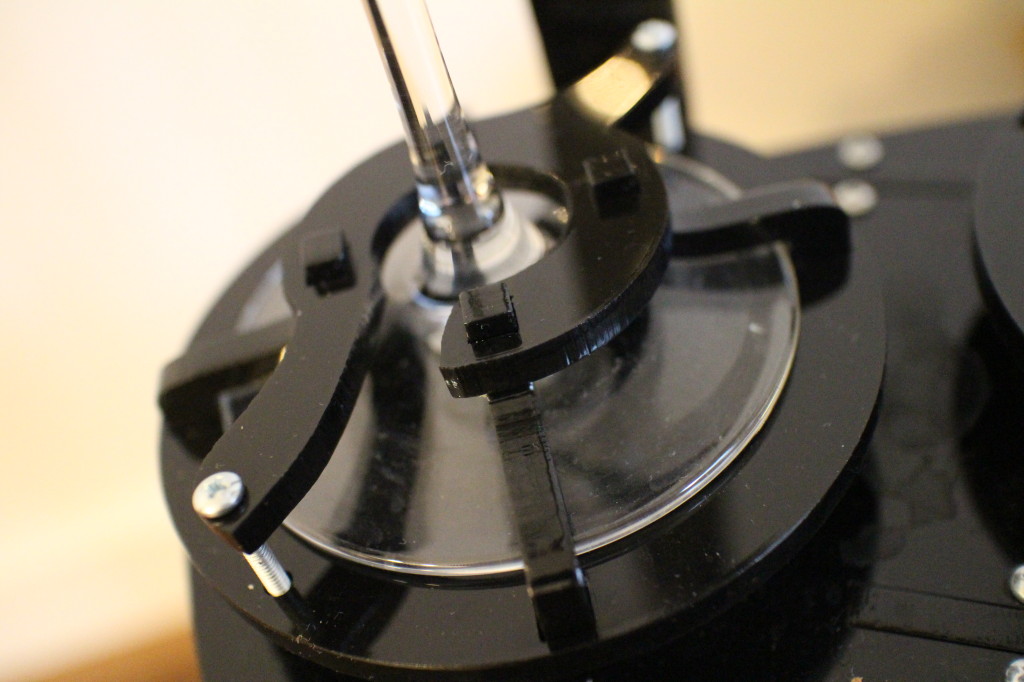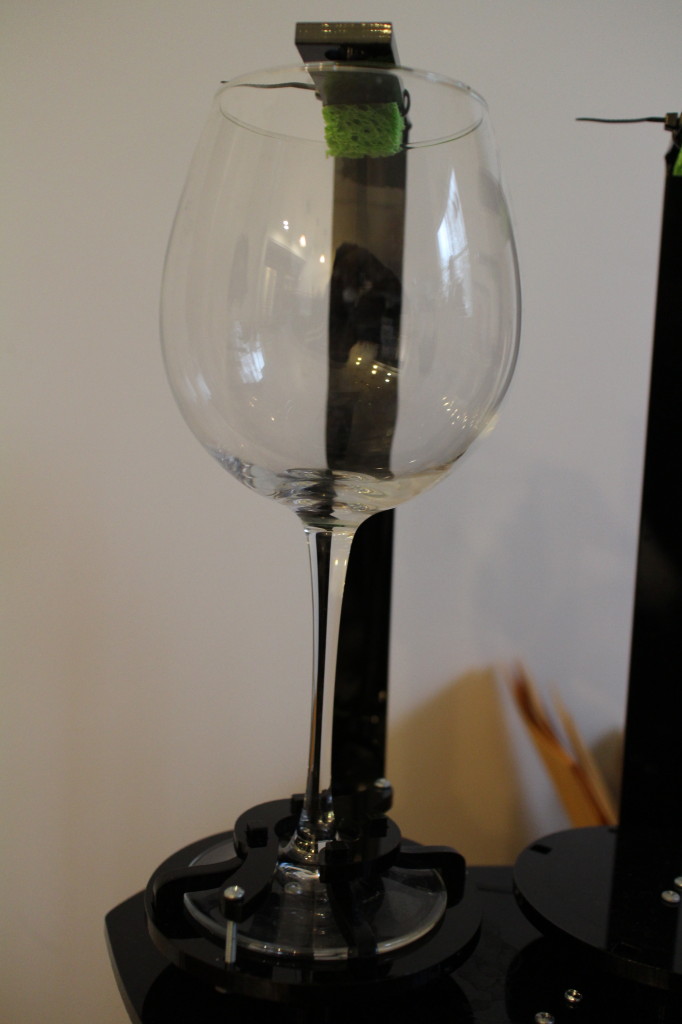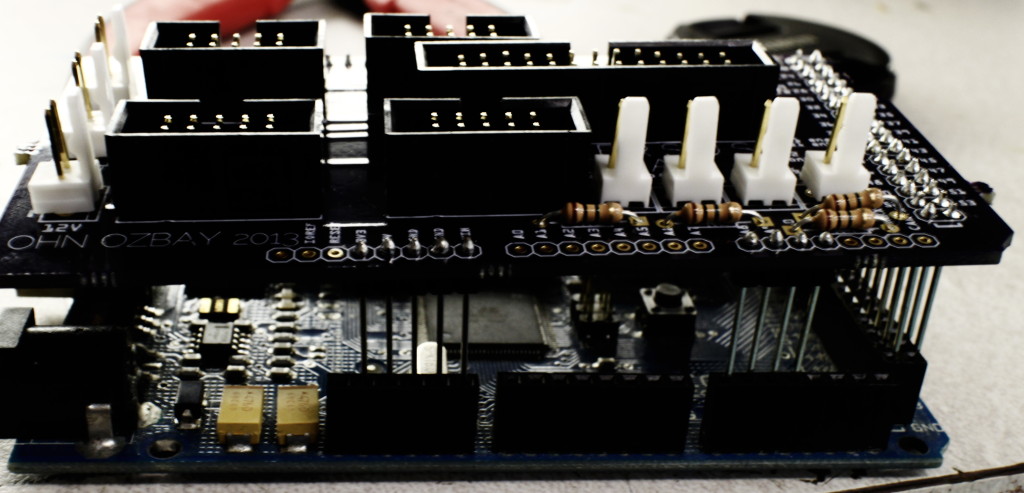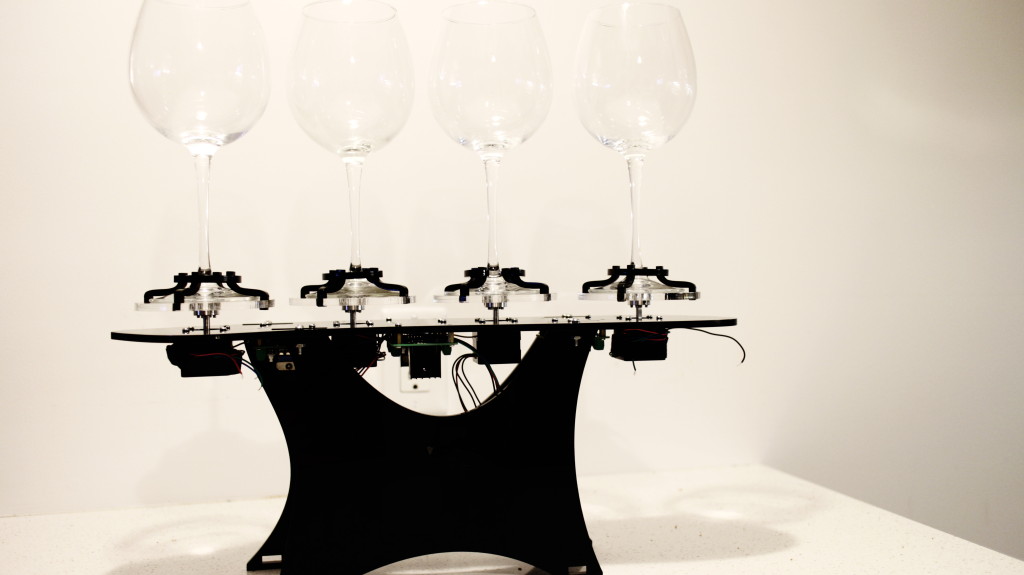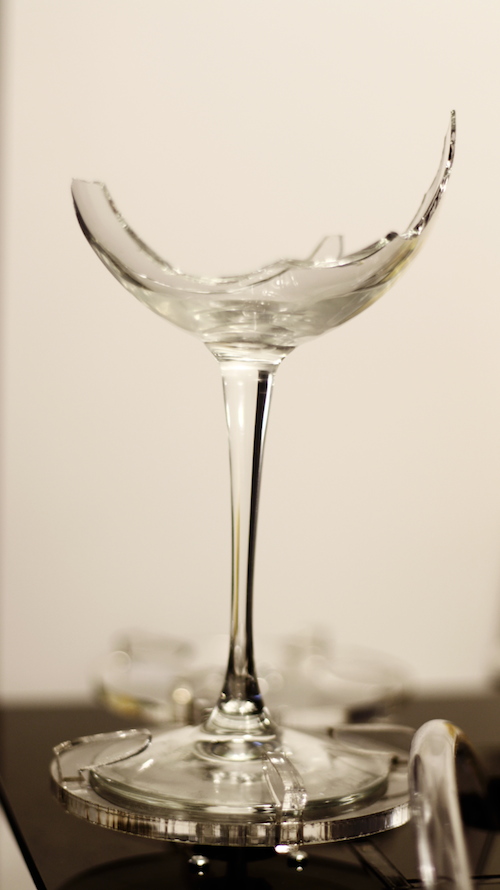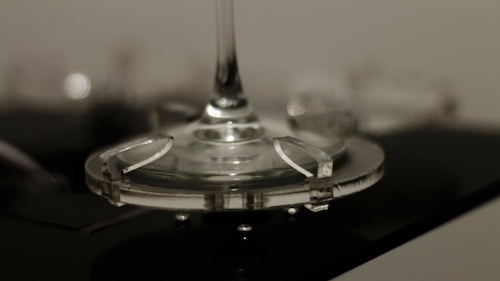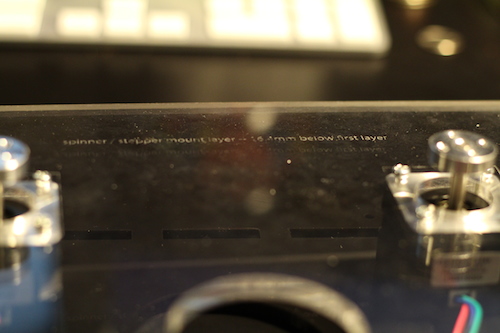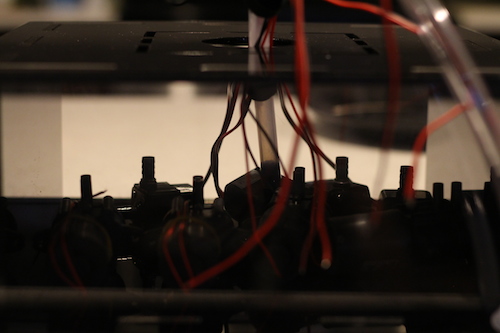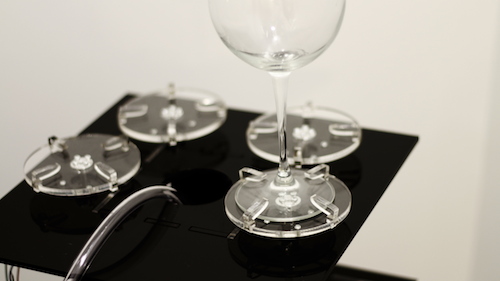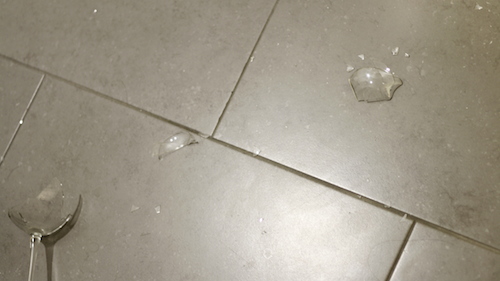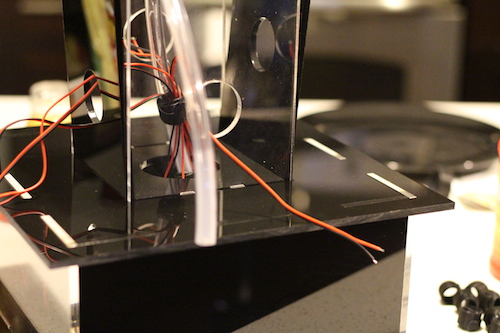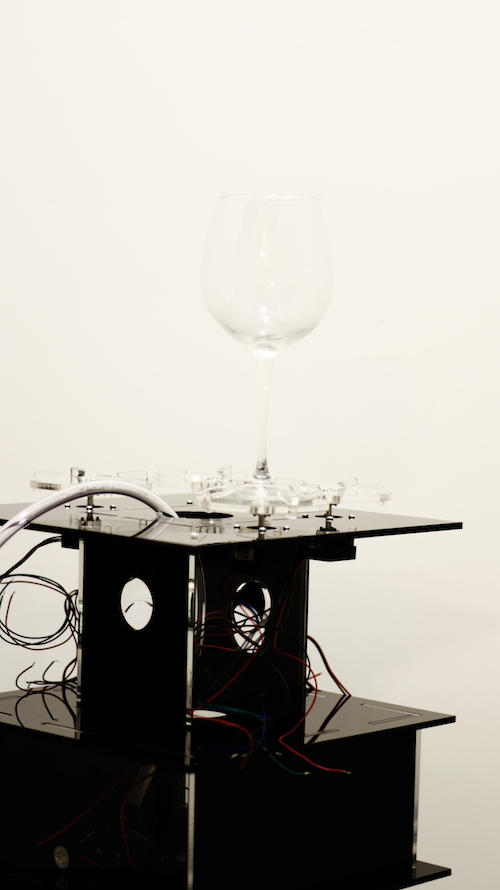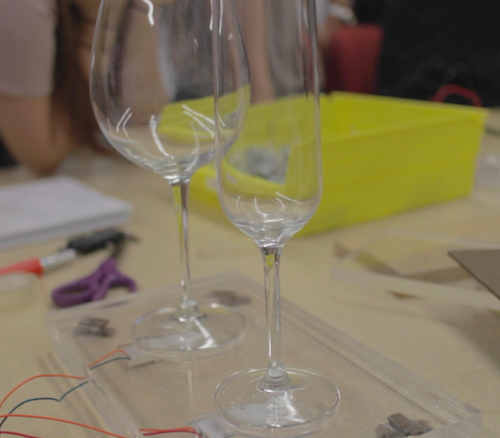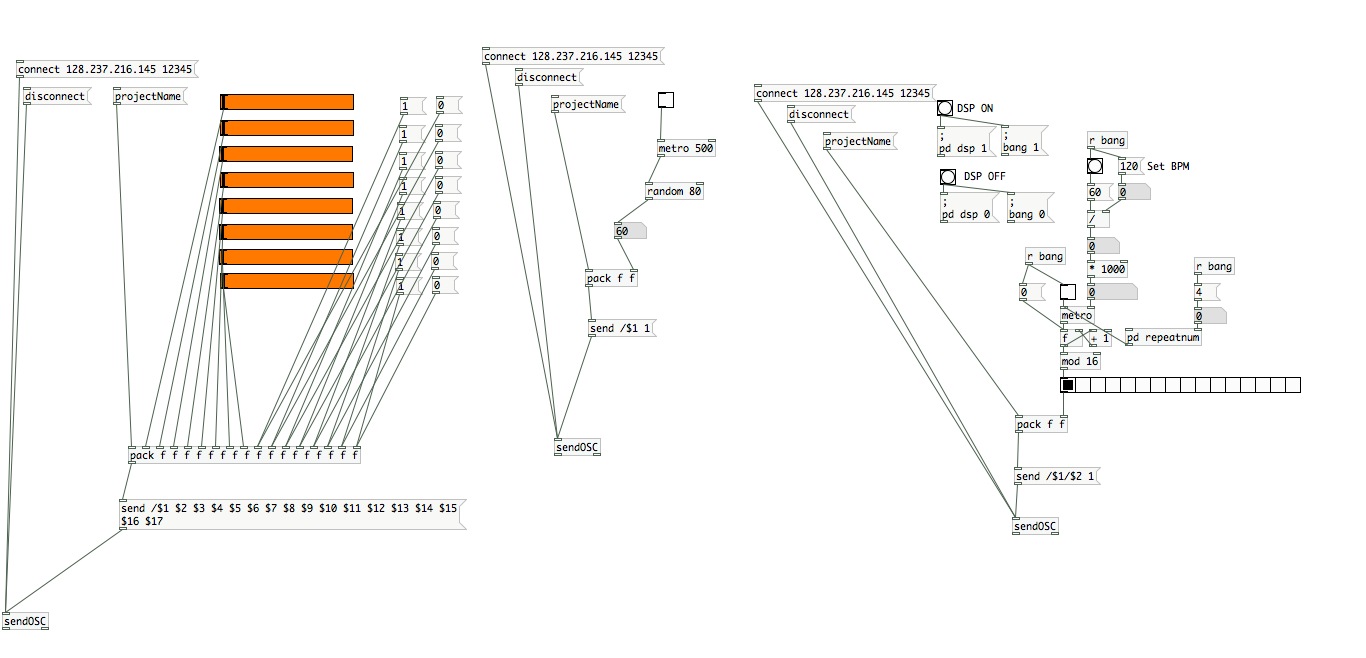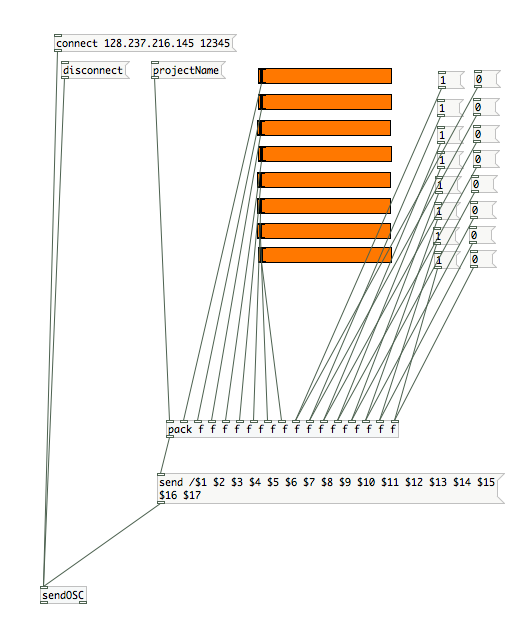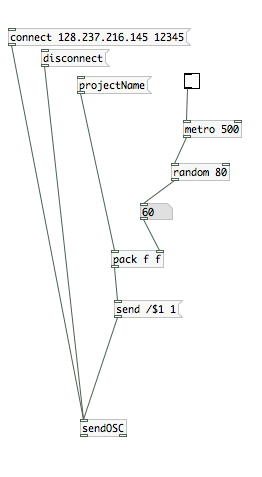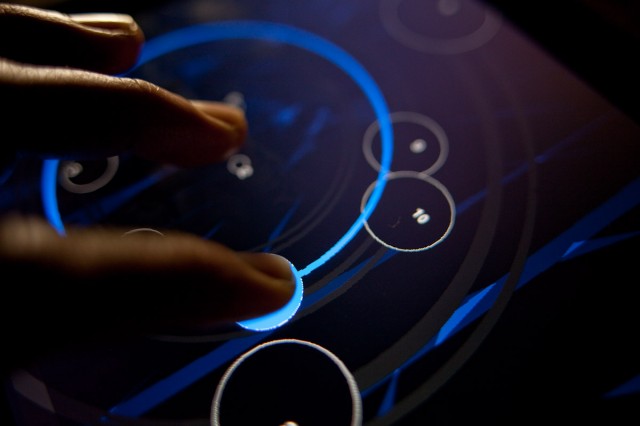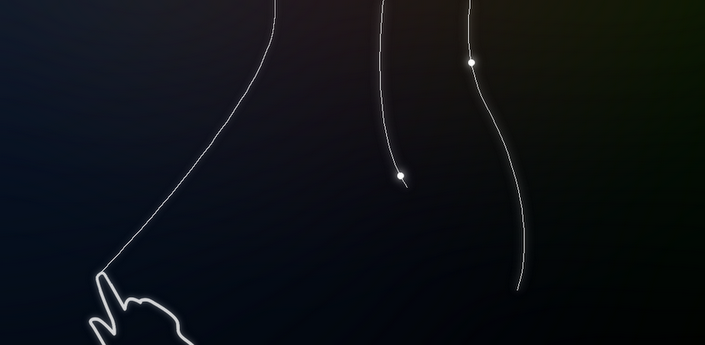Project Description
Our assignment was to showcase how OSC can be used to remote control/connect media objects, or computers together. After an hour of brainstorming, we’ve decided to build a collaborative jazz drumkit, with pureData, and implemented the following control parameters :
- HH, Snare, Kick Volume & Texture controls,
- Cutoff Frequency & Q controls,
- Business & Swing intensity controls.
We’ve added 13 different parameters in total and made a universally controlled jazz drum machine.
Later, we wrote a client app also in PureData, which can be installed on all 13 users’ computers to control the parameters we’ve created. More ? In the video.
Connectivity Diagram
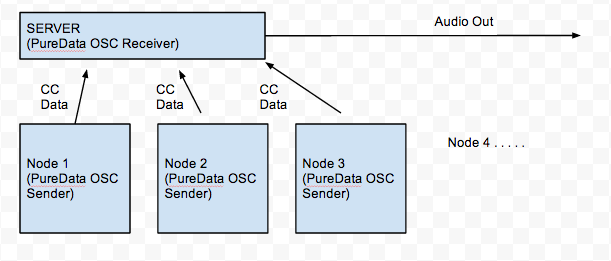
Potential Possible Ideas
This system can be used to create a cumulative rhythm by a jazz orchestra, or an electronic music ensemble to control the overall speed of the current track.
Another great application would be online collaborative rhythm exercises.
Also the system could be easily integrated into DAW software, and it could essentially enable an entire band to work on a single project.
Problems needed to be addressed
Currently, with this system, the nodes can only talk to the server, and the server is the sound output. However the system can be improved to provide two way connection, and this would dramatically improve the capabilities of the system. Ex: Server sending current volume data to everyone.
Also, for if it had to be implemented for a Jazz improv orchestra, it would require the entire band to have control over the tempo, not just one node. Although this is easy to implement, with our prototype, all we wanted to do was to try and create an experimental drum machine.
